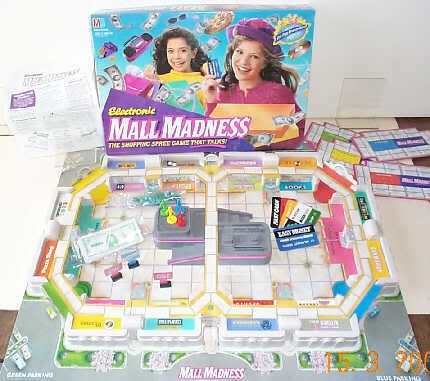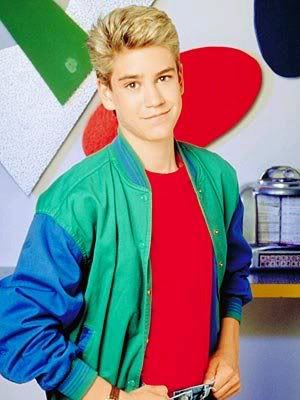
There are only so many viable ways to ensure that young generations sufficiently absorb capitalist values to grow into eventual obedient consumers. The young and idealistic must be programmed to possess superficial values and a strong sense of materialism like the generations of buyers and sellers who preceded them. The real question is, how?
Of all the un
likely sources, the Milton Bradley Corporation seemed to have the answer.
They called it Mall Madness.
For those of you who managed to survive the 90s unscathed by Milton Bradley's sadistic form of capitalist indoctrination, let me paint a picture for you. If you were at any time under the spell of this board game, you will likely want to purchase this picture by the end of reading this post.
The preceding description may be a tad harsh, but it's difficult to deny the deliberate value placement this game projected onto impressionable young minds. As someone who will freely admit her mother denied her the purchase of this game following a particularly potent temper tantrum in the game aisle of Target, I can understand its allure. The 90s toy industry was big on gender stereotyping, and board games were no exception. A 1991 article in Discount Store News offers the following bit of insight into early-90s toy and game marketing:
"Boys play Nintendo," a Parker Brothers spokesman said. "Girls play board games."As much truth as there may have been to this, it is a bit disturbing nonetheless to observe the sweeping generalizations made by toy companies in an effort to neatly separate children into marketable demographics. Mall Madness was a product of this marketing philosophy, and dictated to girls that it was acceptable to be vapid, superficial, materialistic, and openly money-hounding. The real problem was, I wanted to be all of these things. The commercial seemed to speak to me specifically. How exactly did they get inside my brain to produce a commercial tailor-made to meet my shop-till-I-drop needs? They were selling us a set of admittedly questionable values, and we were more than happy to purchase it with the adorable fake credit cards included in the box.

There have been a few subsequent reincarnations of this beloved late 80s/early 90s board game, so I believe this official description from BoardGames.com comes from the most recent one. However, its uncanny similarity serves to show just how far we have not come since the game's original release.
Even just reading this description makes me want to go out and purchase it. The big SALE? Deals? Purchases? ATM? CLEARANCE? Sign me up!
Talking! Electronic!
Find the steals and deals! And see what's in store for you!
Hey girls! Don't miss the big SALE!
Grab your cash and hit the mall! Get your shopping list ready and race from store to store. Quickly find the best deals and make your purchases. But remember, not every shopping trip goes smoothly. Sometimes an item you want is not in stock. Or you must go to the ATM for more cash. First shopper to make 6 purchases and get to the right destination wins!
Taking Mall Center: "Hey, this is on clearance!" "Cha Ching!" "Oh, we're out of stock, try again later"
This game told us exactly how we as girls were supposed to behave and what types of things we were supposed to care about. While in retrospect this should probably alarm and concern all of us, I'm sure the majority of you--like me--are out there thinking, "Oh, yeah! I loved that game!" It's hard to be outraged over something that you once coveted with near-religious fervor. Even the games instructions illustrate just how stupid they thought young girls were. Observe, an excerpt:
They probably could have left it at that first paragraph, but no, that would have been needlessly simple and comprehensible. They had to assign these imaginary characters names, because no way would these girls ever figure out who Player 1 and Player 2 were without them.The Voice of the Mall will say, “Hi Red!...Hi Blue!...Hi Green!...Hi Yellow!” When you hear
your color called, immediately press the Move button. This lets the computer know which shoppers
are playing.
EXAMPLE. You are the red shopper, Anne is the green shopper and Donna is the yellow shopper. As
soon as you hear “Hi Red,” press the Move button. Next you will hear “Hi Blue!” Since no shopper
is blue, no one presses the Move button. Anne presses the Move button immediately after hearing
“Hi Green!” Donna presses the Move button as soon as she hears “Hi Yellow!”
The Voice will repeat each unselected color one more time — just in case a shopper forgot to press
the Button when his or her color was called. If you hear your color repeated, press the Move button.
Also, this creepy unexplained disembodied electronic Voice will actually repeat itself just in case any of you girls are too slow to have partaken in this ridiculously simple task in the first place. Got that, or do I need to explain it again? Milton Bradley would probably vote "yes".

Not only would the Voice tell you what to buy and where to go, it also informed you of your most basic needs. "You're hungry," it would declare. "Meet a friend at the Pizza Place."
Or, alternately, and arguably more straightforward, "Go to the restroom." You almost have to wonder to what extent game designers assumed girls would actually get up from their spots on the slumber party floor to take an actual bathroom break upon hearing this command. I think they may have built in an extended pause in the recording expressly for this purpose.
Or my personal favorite, "You left your lights on. Go to the parking lot." Not only are girls only good for spending money and buying useless material goods, they're also air-headed bimbos who can't be trusted to adequately perform even the simplest of everyday tasks. You've got our number, Milton Bradley (call us on those Dream Phones you gave us anytime!).
I suppose one could argue this game occasionally has the effect of teaching children how to budget, but the noticeably irresponsible level of spending is not exactly to its credit (yes, credit. Like the cards. I'm all for subtle humor). However, the game's written instructions actually drop heavy hints on how to circumvent overdrawn bank balances by highlighting some of the underlying glitches in the game's programming. If you make a purchase and then find that you actually had no money in your account, you can simply return that purchase to keep the money that is in no way rightfully yours. There's nothing likely clearly outlining the means of deception and greed to a couple of enthusiastic shopping-crazy 9 year-old girls.
The crowning glory of the game, however, is the inordinate amount of physical assembly it requires.










